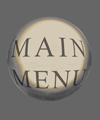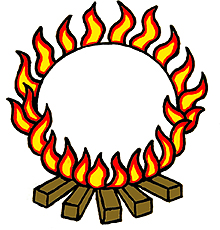
The Reloading Humanism Guide Series is committed to explaining important ideas in plain English in a manner that is interesting to read and which puts not only buzz and excitement but also gravitas back into understanding how the world works and the endeavor of establishing for ourselves why we are here and what it is that we are supposed to do with our lives. The format of the series is e-books and paperback in DIN A-5 format and with a length not exceeding 270 pages.
In the first instance, the publisher is the Buchschmiede or „Book Smithy“ in Vienna. From this source, books are available both as e-books and as hard copies. Within the German-speaking world, copies can be ordered from retailers via the Mohr-Morawa distribution network of which the Buchschmiede is a daughter company. Outside Austria, ordering hard copies may incur unattractively high postal costs. To counter this problem, a globally established print on demand publisher will be sought at the beginning of 2025.
Questing for Truth: Parmenides of Elea, Sappho of Lesbos

Available: www.buchschmiede.at. The book introduces the Greek Pre-Socrartic philosopher and scientist, Parmenides and the famed poet, Sappho.
More
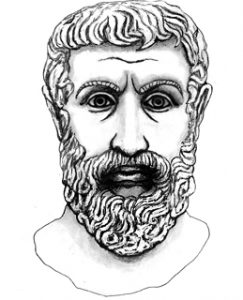
For centuries, it was unquestioningly assumed that Parmenides‘ poem was an allegory. More recently it has been suggested that the work is in fact a description of an actual experience, the experience being nothing less than an altered states revelation of divine truth as imparted by a goddess. After introducing Parmenides and his life and times, the evidence for his poem being the transcribed record of a revelation is examined in detail.
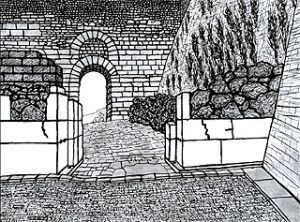
Thereafter, Alexander Curtis explains the nuts and bolts of Parmenides‘ thinking with innovative graphic diagrams being used to illustrate key points.

Throughout the work, the relevance of Parmenides‘ philosophy for us today is pointed out and at the end, there is a loose and lively translation of his otherwise challenging poem. This takes Parmenides out of the stifling tradition of academic philosophy and re-instates the seminal, uncompromisingly radical nature of his thought. The notion of truth and how truth is seen and experienced leads to the work of Sappho, who whilst not a philosopher, did try to lead her life according to principles that derive from philosophy and was concerned with searching out the good, the true and the beautiful. To this effect, a selection of new restorations of Sappho’s poems by Albert von Schirnding have been translated by the author into English and form the basis of an introduction to Sappho and her life and times.
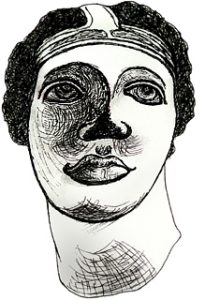
The Venus of Willendorf and the Culture of the Gravette

Available: www.buchschmiede.at. The world-famous Venus of Willendorf dates from an age before writing, yet by combining scientific insights with comparative techniques from the humanities, the veil of silence that surrounds her can be broken and a 30,000 year-old piece of stone made to speak.
More
Not only drawing from archaeology and the anthropology of human origins, this book utilizes the insights of modern genetics, linguistics and philosophy. Based on an analysis of tool use and the notion of intentionality, a theory of art is arrived at that enables the divide between the sciences and the humanities to be bridged. This provides a platform from which the Venus of Willendorf can be investigated. The work is illustrated with copies of Gravettian Venus figurines, maps, drawings and diagrams as well as with an innovative series of photo-montage collages.

Research shows that the Venus of Willendorf and her 160-odd sisters were not pin-ups. Instead they were part of a culture in which time was followed with reference to the moon and woven textiles were known and appreciated.
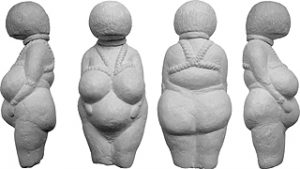
Clay was used to make images that were used for pyrotechnical displays and in art, people had a sense of aesthetics that was in no way inferior to ours.
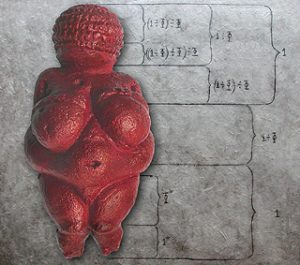
This latter point is established empirically and is backed up by an explanation of why it is that human beings are responsive to the ratio known as the Golden Section.

Although fundamental, this question is never asked. The answer however is simple and continues the analysis of tool-use begun at the beginning.

Embodying the kind of knowledge known by mid-wives, Gravettian Venus figurines reflect the bodily changes that take place over the lifetimes of most women. As such they are a search for identity, with the blank faces posing questions such as: “Who am I?”, “Where do we come from?” and “Where are we going?”
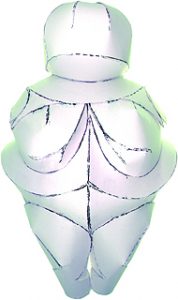
At the end of the book, there is a paper model of the Venus of Willendorf and the formal rationale of the figurine is translated into a set of curves that with dexterity can be reassembled. Even though it only consists of four shapes, the paper model is challenging for grown-ups and requires a high degree of coordination and patience. Accordingly it is not suitable for children.
Rediscovering History in Krems and the Wachau

Available in March 2025. With references to places that can be visited and artefacts that can be seen, the book tells the story of a valley from the Ice Age up until the nineteenth century. Suitable for reading before, during and after a visit.
More
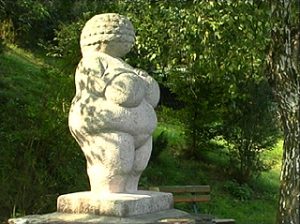
By combining archaeology and information from written sources, with linguistics and genetics and combining these insights with elementary astronomy and insights on the nature of mythology, a new window on the past is opened up. Beginning with Austria’s two most famous artefacts from prehistory, Fanny of Galgeberg and the Venus of Willendorf, the beginnings of religion and time-keeping are uncovered. With the Neolithic and the introduction of a seditary lifestyle, a new way of seeing the world and time is no longer marked out with reference to the moon but rather with reference to the sun.

With the arrival of the Indo-Europeans, known to geneticists as the Yamnaya, a second wave of change sweeps over Europe. When iron becomes the new all-purpose metal, a third wave of change is initiated. In mythology all these developments leave trails of signs that decoded, enabling the myths of old to be understood.
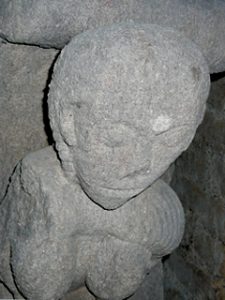
With the arrival of Christianity, new elements are once again introduced. Yet as before, instead of replacing the old beliefs, Christian beliefs and practices are fused onto the old ways and for hundreds of years, a culture of tolerance and parallel cultures is practised. This enables not only the clearly non-Christian iconography that may be found in numerous Early Christian and Medieval churches to be understood but also the lore and customs of Europe.
As the Church slowly becomes established, the Danube ceases to be a barrier and instead becomes a trade route along which wine is shipped upstream whilst iron and salt are shipped downstream. During the Middle Ages, the first Austrian coins are minted in Krems and heretics were burnt at the stake, whilst upriver, a king is held to ransom.
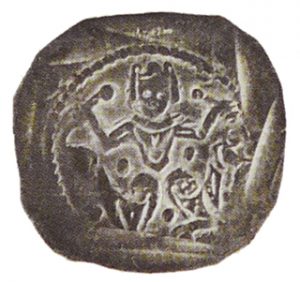
During the Renaissance, important astronomical observations are made at Melk and the Wachau becomes the epicentre of a theological controversy and a hotbed of religious insubordination.
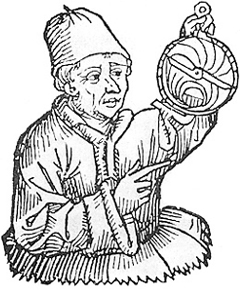
Marking the end of the Renaissance, the Counter Reformation brings the people of Krems and the Wachau back into the Catholic fold. With these developments, the last traces of the old ways are either stamped out or are exorcised from churches and rendered harmless. Instead of joire de vivre a culture of guilt is introduced, with this being embodied in a series of trompe l’oeil sculptures in Krems.
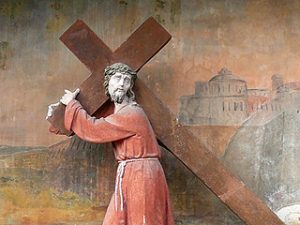
The later spirit of the Baroque is epitomised by Baroque monasteries of the valley, with Göttweig and Dürnstein being taken as case studies. With the Age of Enlightenment, the tenets of the world we know today are introduced, with the flipside of rationalism only emerging during the second half of the nineteenth century when thousands of shippers suddenly find themselves without a livelihood. On this note, the work ends with a cautionary tale told by a relief carved on the end of a barrel in Museum Krems.
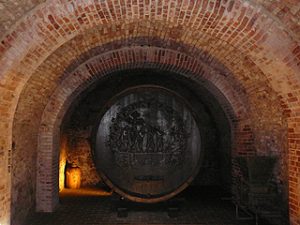
Art & Mathematics in Krems, the Wachau & Borgo Sansepolcro

Available in March 2025. With recourse to a hands-on, working knowledge of Renaissance geometry, the work offers a slate of new insights on the art and mathematics of Piero della Francesca and of how his work inspired an image of Krems‘ patron saint.
More
Following on from Plato, during the Renaissance, geometry was seen both as a discipline that enabled a scientific understanding of the world and as a way by which man might approach and apprehend the ineffable nature of God.
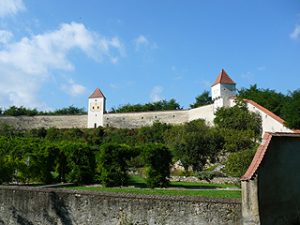
In the Wachau, in the monastic Charterhouse of Aggsbach , this view was challenged and resulted in the Controversy of the Doctrine of Ignorance, in which the monks at Melk also played a role. Yet further South, in Borgo Sansepolcro, the artist and mathematician Piero della Francesca was using complex geometrical constructions as the basis for a new form of painting.
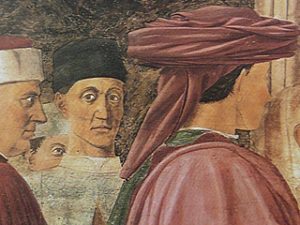
Secretly, these paintings showed how, via a ratio that for centuries was only ever referred to in obscure terms, the bounded and earthly might be overcome. Hidden and yet discernible for those with eyes to see, in a written work, he hinted at how this geometrical key might be constructed. Prepared for printing by the mathematician, Luca Pacioli, also from Borgo Sansepolcro, the work made its way to Krems, where the secret method of construction played a role in prompting a masterpiece of northern Renaissance sculpture.
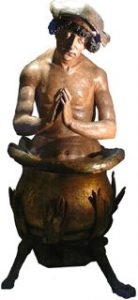
Versohnung
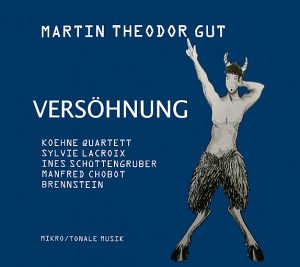
Available. Martin Gut’s CD, Versöhnung or „Reconciliation“, is a series of live fields of energy, that are charged by the skillful use of musical structures that awaken impressions of something that is both known and unknown, something that is somehow familiar and yet which we also know we are hearing for the first time. For samples and easy acquisition in Austria and Germany go to: www.preiserrecords.at or www.jpc.de.
More
Among the tracks of Versöhnung there are works for quartet, flute and piano. Where the opening piece, Trio, is composed using harmonics that derive from the Antique, this is merely the opening for an invigorating series of musical conundrums that challenge us not only to stop and listen but also to wake up. Following Trio is zu köstliche Sache, with the title being a quote from Haydn: „Life is such a delectible thing“. Together with zu köstliche Sache, Versöhnung provides unequivocal evidence that what is being heard, is polished and crafted music made by a composer who is part of a long tradition in which, for two and a half centuries, music has been written for performance by string quartets. Kunst kommt von können, or „art is born from ability“ and both pieces confirm this, standing up to and holding their own against the weight of a potentially over-powering tradition. Between the two pieces there are excursions into other realms. In Whistleblower the flute is put through its paces. In a meandering series of scales and arabesques, the percussive properties of the instrument are also exploited with the results being analogous to when string players pluck their instruments. In the minimal K.N.O.T., notes are staged so as to fill out space and time in a way that allows them to be themselves. Although there is a structure to the piece, its subtle sophistication is such that it is not immediately identifiable. In the quartet, Vesöhnung, the composer exploits the possibilities offered by multi-phonics in which notes can be played so as to generate a number of different overtones that are heard simultaneously. To this effect, towards the end of the piece, the cello is marginalised and silenced, with its later return enabling a reconciliation with the multi-phonics which orginally lead to its being ostracised. This paves the way for the triumphantly euphoric, Zimmerreise, in which the piano and the tradition of piano music is celebrated.
Music in Krems, Stein and Göttweig: 1561-1826

This is a long term project that is still at the planing stage. Beginning with the fragment of a work begun by Beethoven whilst staying with his brother in Gneixendorf during the autumn of 1826, this compilation will follow a trail of works composed in the twinned towns of Krems and Stein as well as in in the local monastery of Göttweig situated immediately opposite on the other side of the River Danube.
More
In 1772, the English musician and music historian, Charles Burney (1726-1814) travelled through Austria, Germany and Bohemia and in Krems enthused at the high level of musicality that he found there. One evening, from a barge on the river, he chanced to hear four women singing privately in a house in Stein and was delighted at the competance with which the four voices of the polyphonic composition were sung. Ashore, he observed that in Krems „undistinguished citizens in taverns and farmers at work in the fields, will sing for pleasure, songs in two more voices“. By featuring pieces of music that were composed in Krems, Stein and Göttweig, the aim of the compilation is to give a musical form to this testimony. The compilation starts with the fragment composed by Beethoven in Gneixendorf:
Ludwig van Beethoven’s Last Musical Thought, adapted for piano by Anton Diabelli, Wien, 1838, ÖNB
https://digital.onb.ac.at/RepViewer/viewer.faces?doc=DTL_7996722&order=1&view=SINGLE
Thereafter the earliest piece is by Adam Händl:
Psalm David von Heiligen Ehestandt verdeutscht und mit vier Stimmen zu singen, Wien, 1561, ÖNB
https://digital.onb.ac.at/RepViewer/viewer.faces?doc=DTL_4437726
followed by Johannes Baptist Gletle:
Deliciae Sacrae sine Novem Psami Vespertini, Krems, 1687, Bayerisches Staatsbibliothek
https://stimmbuecher.digitale-sammlungen.de/view?id=bsb00094179
